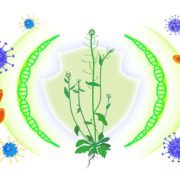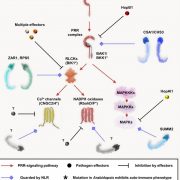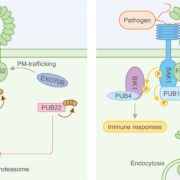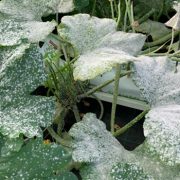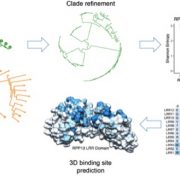A cellular transporter controlling the uptake, effectiveness and side effects of chemicals that prime plant immunity
Tao et al. identify the transporter for beta amino acids that induce priming in plants. https://doi.org/10.1093/plcell/koac271
By Jurriaan Ton & Chia-Nan Tao, University of Sheffield
Background: Specific chemicals can induce long-lasting disease resistance in plants. These chemicals act by mediating a form of immune memory, called ‘priming’, which enables the plant to activate a faster and/or stronger defence response upon future pathogen attack. The beta-amino acids beta-aminobutyric acid (BABA) and R-beta-homoserine (RBH) are particularly effective in priming taxonomically unrelated plants against a wide range of diseases. Previous research from our lab has shown that BABA and RBH, despite their structural similarity, are perceived and controlled by different receptors and pathways. However, the transporter responsible for the cellular uptake of these two priming agents has remained unknown.
Question: To identify new genes controlling RBH-induced resistance in Arabidopsis, we carried out a genetic screen for Arabidopsis mutants that are impaired in RBH-induced immunity against the downy mildew pathogen Hyaloperonospora arabidopsidis (Hpa). The first mutant that we isolated turned out to be affected in the high-affinity amino acid transporter LYSINE HISTIDINE TRANSPORTER 1 (LHT1).
Findings: Experiments to characterize the Arabidopsis lht1 mutant demonstrated that LHT1 controls resistance induced by RBH and BABA by controlling the uptake of these chemicals from the soil. Competition experiments with the LHT1 substrate L-alanine and yeast cells expressing the LHT1 gene confirmed that LHT1 acts as a high-affinity transporter of RBH and BABA. Subsequent characterization of mutant and over-expression lines of Arabidopsis revealed that the uptake level by LHT1 controls not only the resistance response to RBH and BABA, but also the phytotoxic side-effects upon chemical overstimulation with higher concentrations. Hence, LHT1 acts as a master regulator of the trade-off between induced resistance and growth caused by RBH or BABA.

Next steps: An important take home message from our study is that the trade-off between induced resistance and growth by resistance-inducing beta-amino acids like BABA and RBH can be optimized by manipulating the LHT1 gene. This conclusion offers major translational opportunities for breeding programs that aim to exploit BABA- and/or RBH-induced resistance in crops, but suffer from the phytotoxicity of these agents.
Reference:
Chia-Nan Tao, Will Buswell, Peijun Zhang, Heather Walker, Irene Johnson, Katie Field, Roland Schwarzenbacher and Jurriaan Ton (2022) A single amino acid transporter controls the uptake of priming-inducing beta-amino acids and the associated trade-off between induced resistance and plant growth. https://doi.org/10.1093/plcell/koac271


